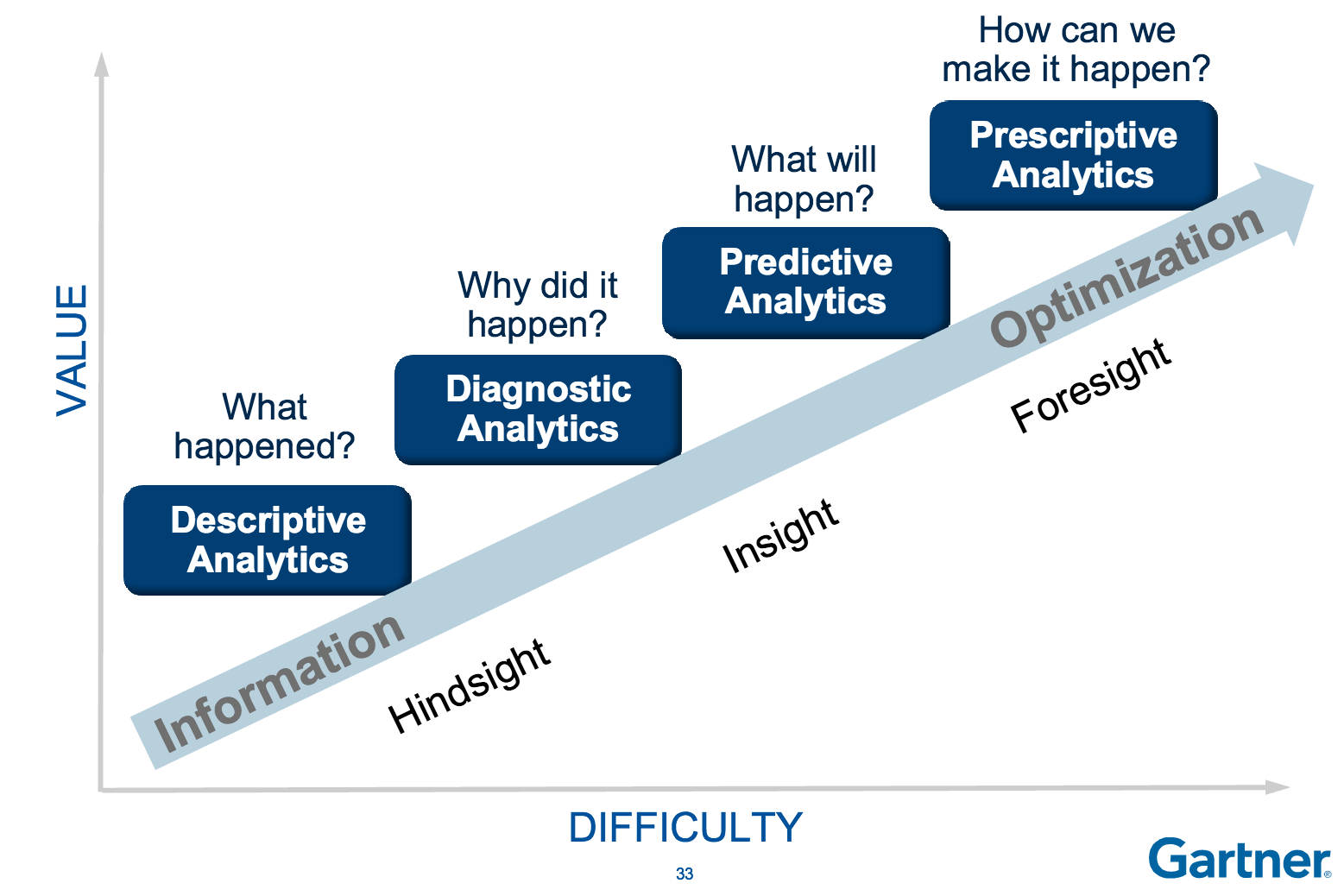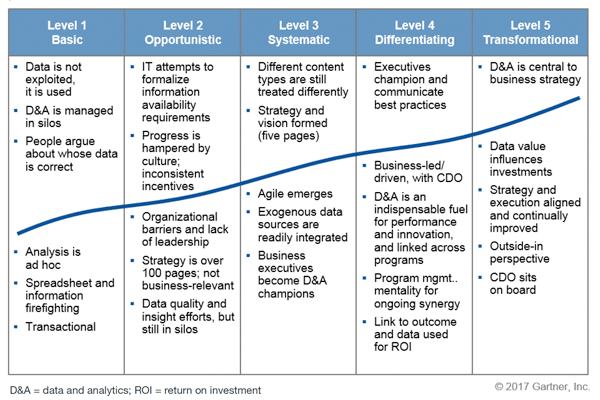September 11, 2023
3 min read
Data Maturity Models For Data Science
Data Maturity Models (DMM) are simple frameworks to understand the current state of your organization's Data & Analytics Journey. This is useful because it establishes common vocabulary to express the stage to which a Data Science project belongs to.
Gartner's 4 Stage Data Maturity Model

This is a simplistic model that is focused solely on an organization's Data Journey.
There is a lot to unpack from this simple graph:
-
Descriptive AnalyticsandDiagnostic Analyticsare about thepast. -
Predictive AnalyticsandPrescriptive Analyticsare about thefuture. -
Value lies in predicting the future based on past data but this is also error-prone and hard.
-
Let's take a finance example where one is analyzing the finances of a business to explain the four stages:
Descriptive Analytics (What happened?): This is like looking at aCash Flow Statementover a period of time. It gives you a picture of cash flowing in and cash flowing out of a business after the fact.Diagnostic Analytics (Why did it happen?): Let's say you realize from the "Cash Flow Statement" that more money flowed out of the business than what came in. To determine the root cause, you can do somediagnosissuch as looking at theCurrent Ratiowhich is "current assets divided by current liabilities" that tells you if your business can pay its current bills.Predictive Analytics (What will happen?): Naturally, any business wants to be profitable. A technique known as "Cost Benefit Analysis" can be used to predict the profits that a business can generate in the future based on costs it will incur on various potential investments.Prescriptive Analytics (How can we make it happen?): This is the hardest stage since it involves many interdependent variables. Moreover, past performance does not guarantee future results. A technique often used under such conditions is the Monte Carlo Simulation.
Gartner's 5 Stage Data Maturity Model

This model is more sophisticated and is focused on an organization's Data & People Journey.
The "People" aspect of this model is particularly interesting. It clearly outlines the correlation between data maturity and change in behavior at an organizational level. For example:
-
In
Level 1- data is in silos, analysis is ad hoc and people argue about the correctness of data. -
In
Level 5- data is managed with formal systems / processes and data analytics is central to business strategy.
Conclusion
Some key questions to ask for your next Data Science project:
- Which Data Maturity Model are you following?
- Which stage of the Data Maturity Model does your project belong to?
- Do stakeholders understand that typically Data Maturity is a journey and not a one-off project?
- What goals and deliverables have been identified for various stages of the Data Maturity Model?
In this post we looked at two specific examples of a "Data Maturity Models (DMM)". However, there are several other models that you can consider depending on the project. See also: